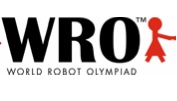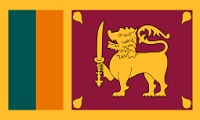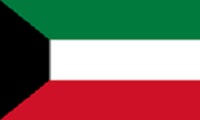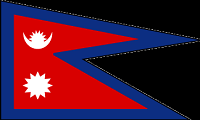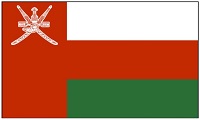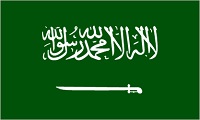Parent Organisation:
World Robot Olympiad
About National Robot Olympiad:
The World Robot Olympiad is a global robotics competition for young people. The World Robot Olympiad competition uses Lego Mindstorms manufactured by LEGO Education. It is a team‐based challenge and has four competition categories:
- Regular Category
- Open Category
- WRO Football
- Advanced Robotics Challenge
Rules and Guidelines:
Material:
- The controller, motors and sensors used to assemble robots must be from LEGO® MINDSTORMS ™ sets (NXT or EV3). Only LEGO branded elements may be used to construct the remaining parts of the robot.
- Teams should prepare and bring all the equipment, software and portable computers they need during the tournament. All the parts for the robot should be disassembled and in their initial state (not pre‐built) when the assembly time starts. For example, a tire cannot be put on a wheel until assembly time begins. Teams may make the program beforehand.
- Coaches are not allowed to enter the court to provide any instructions and guidance during the competition.
- It is not allowed to use screws, glues or tape or any other Non-LEGO material to fasten any components on robots. Non‐compliance with these rules will result in disqualification.
- Control software depends on the age group:
- For Elementary and Junior age group only ROBOLAB®, NXT® and EV3 software is allowed.
- In the Senior age group it is allowed to run any software and any firmware on NXT / EV3 controllers.
- Allowed sensors and motors:
|
9842 - NXT Motor with Tacho |
|
9843 - NXT Touch Sensor |
|
9844 - NXT Light Sensor |
|
9845 - NXT Sound sensor |
|
9846 - NXT UltraSonic sensor |
|
9694 - NXT Colour sensor |
|
45502 – Large Motor |
|
45503 – Medium Motor |
|
44504 – Ultrasonic Sensor |
|
44506 – Color Sensor |
|
44507 – Touch Sensor |
|
44509 – Infrared Sensor |
|
45505 – Gyro Sensor |
|
HiTechnic NXT Color Sensor V2
Robot: |
- The maximum dimensions of the robot before it starts the “mission” must be within 250mm × 250mm ×250mm. After the robot starts, the dimensions of the robot are not restricted.
- Teams are allowed to use only one controller (NXT or EV3).
- The number of motors and sensors to be used is not restricted. However, it is only allowed to use official LEGO® materials to connect motors and sensors.
- It is not allowed for the teams to perform any actions or movements to interfere or assist the robot after the actions to start the robot is performed (the program is run or the central button is pressed to activate the robot). Teams that violate this rule will get a score of 0 in this particular run.
- A robot must be autonomous and finish the “missions” by itself.
- The robot can leave on the field any parts of the robot that are not containing main units (controller, motors, sensors) if needed. As soon as the part is touching the field or its game element and does not touch the robot it is considered as a free LEGO element not being part of the robot.
- The Bluetooth and Wi-Fi function must be switched off at all times.
- Use of SD cards to store programs is allowed.
OPEN CATEGORY
Material:
- The size of the booth provided to teams will be 2m × 2m × 2m. (Each team will be provided with three (3) vertical display surfaces within the booth, each 2m × 2m or as close as possible).
- All elements of a team’s display must remain within the allotted 2m × 2m × 2m booth area. Team members may be outside this space during a presentation, however, unless requested by judges, robots and other display elements must remain within the allotted area.
- Teams will be provided with the option of using a table (120cm × 60cm or as close as possible).
Robot:
- There is no restriction on the balance between LEGO® elements and other materials.
- All robots must be operated by NXT or EV3 controllers and any software.
- Robots may be preassembled and software programs may be pre‐made!
Marking Scheme:
Open Category
|
Category |
Criteria |
Points |
|
|
1. Project (Total Points: 50) |
1. Creativity 2. Quality of Solution 3. Research & Report 4. Entertainment Value |
10 15 15 10 |
|
|
|
|
||
|
|
|
||
|
|
|
||
|
2. Programming (Total Points: 45) |
1. Automation 2. Good Logic 3. Complexity |
15 15 15 |
|
|
|
|
||
|
|
|
||
|
3. Engineering Design (Total Points: 45) |
1.Technical Understanding Engineering Concepts Mechanical Efficiency Structural Stability Aesthetics.
|
15 10 10 5 5 |
|
|
|
|
||
|
|
|
||
|
|
|
||
|
|
|
||
|
4. Presentation (Total Points 40) |
1. Successful Demonstration 2. Communication & Reasoning Skills 3. Quick Thinking 4. Posters and Decorations
5. Project Video |
15 10
5 5 5 |
|
|
|
|
||
|
|
|
||
|
|
|
||
|
|
|
||
|
5. Teamwork (Total Points: 20) |
1. Unified Learning Outcome 2. Inclusiveness 3. Team Spirit |
10 5 5 |
|
|
|
|
||
|
|
|
||
|
Maximum Points |
200 |
||
Eligibility Criteria:
- Elementary: up to 12 years old
- Junior: 13 - 15 years old
- Senior: 16 – 19 years old
- WRO Football: 10 – 19 years old
- Advanced Robotics Challenge: 17 – 25 years old
Anyone can participate in the corresponding age groups, except for participants in the Advanced Robotics Challenge who MUST be either High School or undergraduate students.
Level of Exam:
WRO is a team‐based challenge. To participate in each category of competition, students must work in teams.
A team consists of one (1) coach and two (2) or three (3) team members.
One (1) coach and one (1) team member is not considered to be a team and cannot participate
Cut-off:
The ranking of a team is decided depending on the overall competition format.
Countries:
Africa, Egypt, Ghana ,Morocco, Nigeria, South Africa, Tunisia, Americas, Bolivia, Brazil, Canada, Colombia, Costa Rica, Cuba, Ecuador, El Salvador, Mexico, Nicaragua etc..

